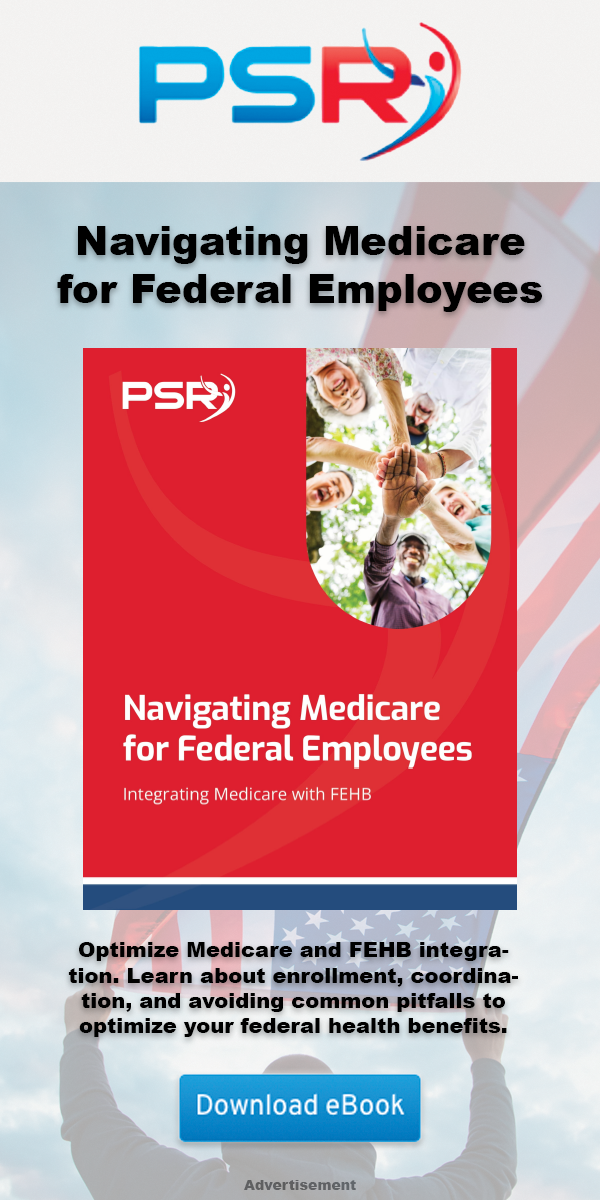Key Takeaways
-
Medicare Advantage plans may offer attractive extras, but the new Postal Service Health Benefits (PSHB) program in 2025 often provides more comprehensive protection, especially for annuitants who enroll in Medicare Part B.
-
If you’re a USPS retiree or employee, PSHB could reduce your out-of-pocket costs and simplify coordination with Medicare—something many Medicare Advantage enrollees don’t experience.
Medicare Advantage Promises More—But With Trade-Offs
- Also Read: Ready for Retirement? Here’s How Law Enforcement Officers Can Leave the Job with Benefits Intact
- Also Read: FAA, Law Enforcement, and Special Federal Employee Categories—Here’s What Makes Their Retirement Unique
- Also Read: Blending Private and Public Sector Retirement Plans Is Complicated—Here’s Where Couples Get It Wrong
These plans, also known as Medicare Part C, are administered by private companies that contract with Medicare. They must cover the same benefits as Original Medicare (Parts A and B), but they can design their own networks, cost-sharing rules, and benefit structures.
In 2025, Medicare Advantage plans continue to:
-
Offer lower monthly premiums than some Medigap or employer retiree plans
-
Require enrollees to use a defined provider network (HMO or PPO)
-
Include prior authorization for many services
-
Place caps on out-of-pocket spending (in-network limits are $9,350 for 2025)
But there are caveats:
-
Networks may not include your preferred doctors or specialists
-
Costs can add up due to copayments, coinsurance, and deductibles
-
Prior authorizations may delay care or lead to denials
-
Extra benefits may come with restrictions, such as limited provider access or usage limits
PSHB Offers a More Traditional but Flexible Structure
The Postal Service Health Benefits (PSHB) program, implemented in 2025, replaces FEHB for USPS workers and retirees. For retirees enrolled in Medicare, PSHB offers stronger coordination and often better financial protection.
Under PSHB, if you are Medicare-eligible and enrolled in Medicare Part B, many plans reduce or waive deductibles, lower your copayments, and eliminate the need to coordinate separately with a Part D drug plan. In fact, your PSHB plan includes an integrated Medicare Part D EGWP (Employer Group Waiver Plan), which provides prescription drug coverage.
PSHB plans:
-
Allow nationwide access to providers—no restrictive networks
-
Waive or lower cost-sharing when combined with Medicare Part B
-
Avoid prior authorization for many Medicare-covered services
-
Provide prescription drug coverage through the plan itself
-
Cap out-of-pocket drug expenses at $2,000 for 2025
This structure can mean fewer administrative hassles and broader protection when your health needs grow more complex.
Enrollment Requirements Add a Layer of Protection
Starting in 2025, most Medicare-eligible USPS annuitants and their Medicare-eligible family members are required to enroll in Medicare Part B to maintain PSHB coverage. This requirement is not arbitrary—it strengthens the plan’s ability to coordinate benefits effectively and keep total costs down for both enrollees and the government.
This requirement applies to:
-
Retirees who are Medicare-eligible and not already enrolled in Part B
-
Covered family members who are also Medicare-eligible
There are exceptions:
-
If you retired on or before January 1, 2025, and aren’t already enrolled in Part B, you’re exempt
-
If you are living abroad or receive care through VA or Indian Health Services, you may qualify for an exemption
Enrollees who meet the requirement and maintain both PSHB and Medicare Part B coverage typically experience enhanced protection through lower out-of-pocket costs and more seamless claims processing.
Prescription Drug Coverage That Fills in Gaps
Unlike many Medicare Advantage plans that rely on standalone Part D coverage or narrow formularies, PSHB includes prescription drug benefits through a Medicare-integrated plan. This Employer Group Waiver Plan (EGWP) model is part of the PSHB plan itself. That means you do not need to shop separately for drug coverage.
Important 2025 features of PSHB drug coverage:
-
Coverage is automatic if you’re Medicare-eligible and enrolled in PSHB
-
Part D coverage includes the new $2,000 out-of-pocket cap
-
$35 monthly insulin cost cap remains in place
-
PSHB plans offer expanded pharmacy networks compared to many retail plans
By bundling prescription coverage with your main health plan, you simplify your benefits and avoid fragmentation. You’re also protected from the higher out-of-pocket costs that can arise from non-integrated Part D plans.
Medicare Advantage Extra Perks—A Closer Look
The appeal of Medicare Advantage plans often lies in the extras—hearing aids, gym memberships, transportation, meal deliveries, and over-the-counter (OTC) allowances. While these sound generous, the reality is that these benefits vary widely by plan and are often subject to use restrictions.
In 2025:
-
The percentage of plans offering OTC allowances has dropped to 73%, down from 85% in 2024
-
Only 30% of plans offer transportation benefits
-
Fewer plans provide broad dental coverage; many focus only on preventive care
These extras, while helpful, don’t always justify the potential limitations in core medical coverage. If you value predictable costs, broad provider access, and simplified coordination with Medicare, PSHB may offer a better balance.
Out-of-Pocket Costs: What to Expect in 2025
Cost predictability is critical in retirement. Medicare Advantage plans promote annual out-of-pocket caps, but those caps only apply to in-network services—and they’ve risen in 2025. Meanwhile, PSHB plans offer lower caps and additional savings for Medicare Part B enrollees.
For 2025:
-
Medicare Advantage in-network MOOP (maximum out-of-pocket) limit: $9,350
-
PSHB in-network MOOP: $7,500 for Self Only; $15,000 for family options
-
Prescription drug MOOP under PSHB: $2,000 (Part D cap)
When you pair PSHB with Medicare Part B, your actual expenses may fall well below these thresholds due to waived deductibles and lower copays.
Access to Providers—Freedom vs. Limits
One of the biggest concerns with Medicare Advantage is provider access. While PPO plans offer more flexibility than HMOs, they still operate within defined networks. Some high-value specialists or hospitals may be out-of-network—or unavailable altogether.
With PSHB:
-
You typically have nationwide provider access
-
You are not restricted to a local or regional network
-
Many PSHB plans honor any Medicare-participating provider
This flexibility can make a significant difference if you travel, relocate, or need care from a specialty facility outside your area.
Prior Authorization and Care Delays
Another sticking point with Medicare Advantage is the widespread use of prior authorization. In many plans, services such as MRIs, home health, and post-acute care require advance approval. This can lead to delays or even denials.
PSHB plans, especially when paired with Medicare Part B, reduce or eliminate these administrative hurdles. Since Medicare itself doesn’t require prior authorization for most services, your care moves more efficiently when both programs work together.
This difference becomes more critical as your health conditions grow more complex and you need timely, coordinated care.
Coordination and Claims Simplicity
Medicare Advantage consolidates all your benefits into one private plan—but that doesn’t mean less complexity. Instead, you often deal with a web of approvals, formularies, and varying copayments.
With PSHB and Medicare:
-
Medicare pays first for covered services
-
Your PSHB plan acts as secondary, covering remaining out-of-pocket costs
-
Claims coordination is automated and often seamless
-
Drug benefits are embedded, not bolted on
This structure may simplify billing, reduce denied claims, and help you manage costs more transparently.
Why Broader Protection Matters as You Age
The older you get, the more health risks you face—and the more important it becomes to have robust, flexible, and reliable coverage. While extras like meal delivery or vision discounts are attractive, they don’t offset limited hospital access or surprise bills from out-of-network providers.
PSHB coverage, when paired with Medicare, is designed to provide long-term protection that scales with your needs. Its nationwide access, fewer barriers to care, integrated drug coverage, and lower cost-sharing all point toward stronger retirement security.
Think Long-Term When Choosing Coverage
The decision between Medicare Advantage and PSHB coverage isn’t just about 2025—it’s about your long-term stability. Consider the big picture:
-
Will your providers remain in-network?
-
Are you willing to manage prior authorization?
-
How predictable are your copayments?
-
Does your plan scale with future health challenges?
PSHB was designed specifically for postal retirees. When coordinated with Medicare Part B, it gives you access to one of the most comprehensive retiree health packages available in the public sector.
Consider Your Coverage Needs Carefully
Extras can be enticing, but comprehensive coverage is essential—especially in retirement. The PSHB program, now in place for 2025, offers you broader access, more predictable costs, and better coordination with Medicare than most Medicare Advantage plans. Before you make any changes to your health coverage, it’s worth sitting down with a licensed agent listed on this website to review your options and ensure you understand the full scope of your benefits.












